If you’ve ever been bored by the same chord progressions over and over, this is the lesson for you!
In this post, we’ll look at little ways you can spice up your chord progressions by adding small tweaks here and there. These add-ons may not seem like much, but they’ll make a big impact on your playing, adding just enough to keep your listeners hooked.
As an example, we’ll be using this gorgeous progression:
G > A > D > Bm
If you’re a theory nerd, you may recognize that we’re playing a IV-V-I-vi progression in D Major.
Here are the chords in root position:
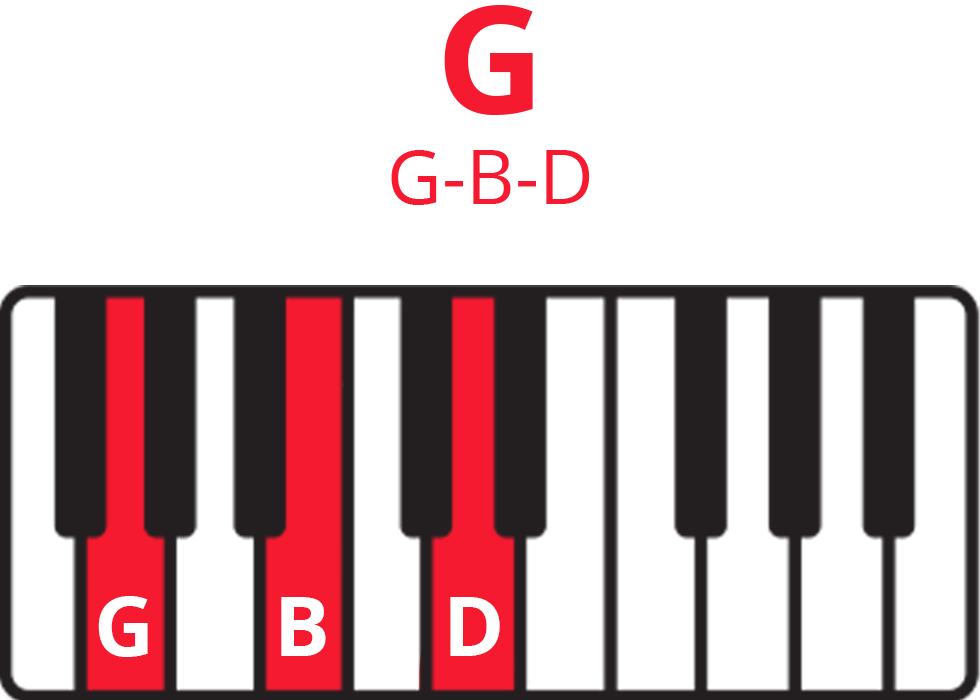
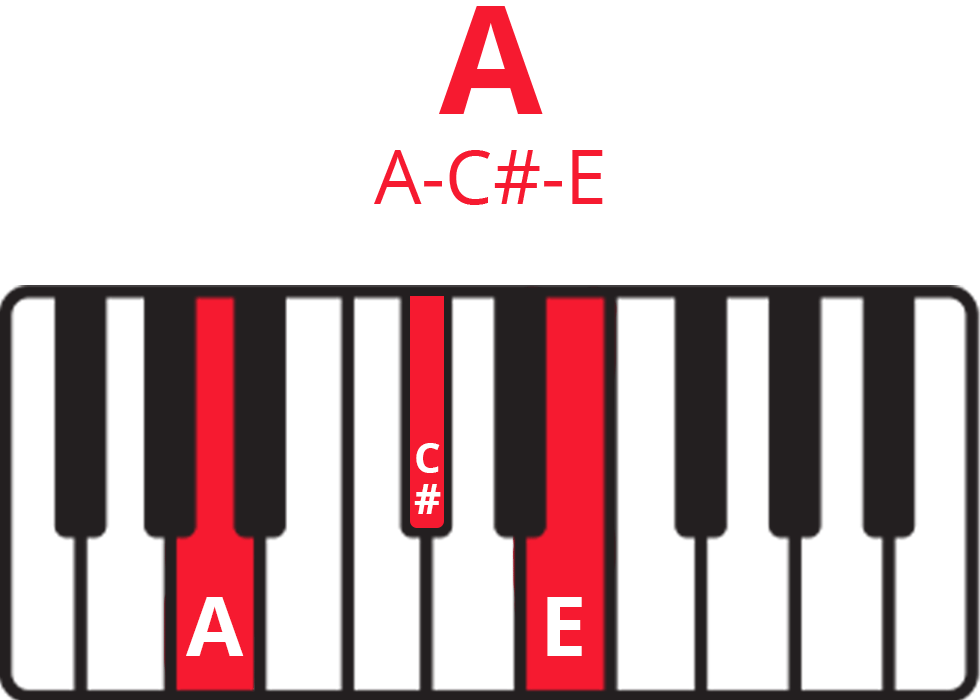
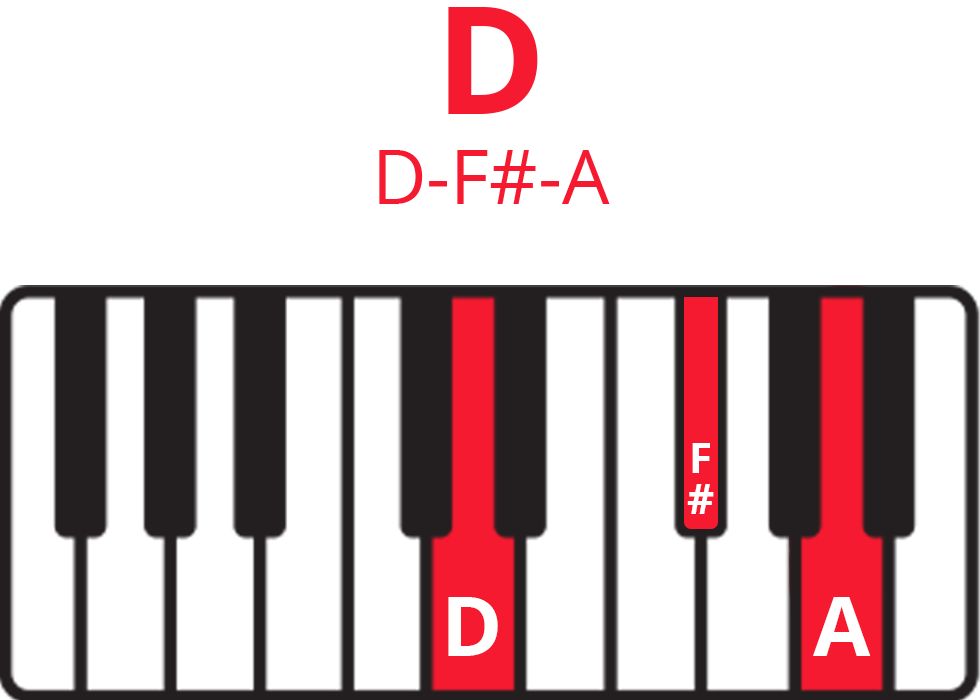
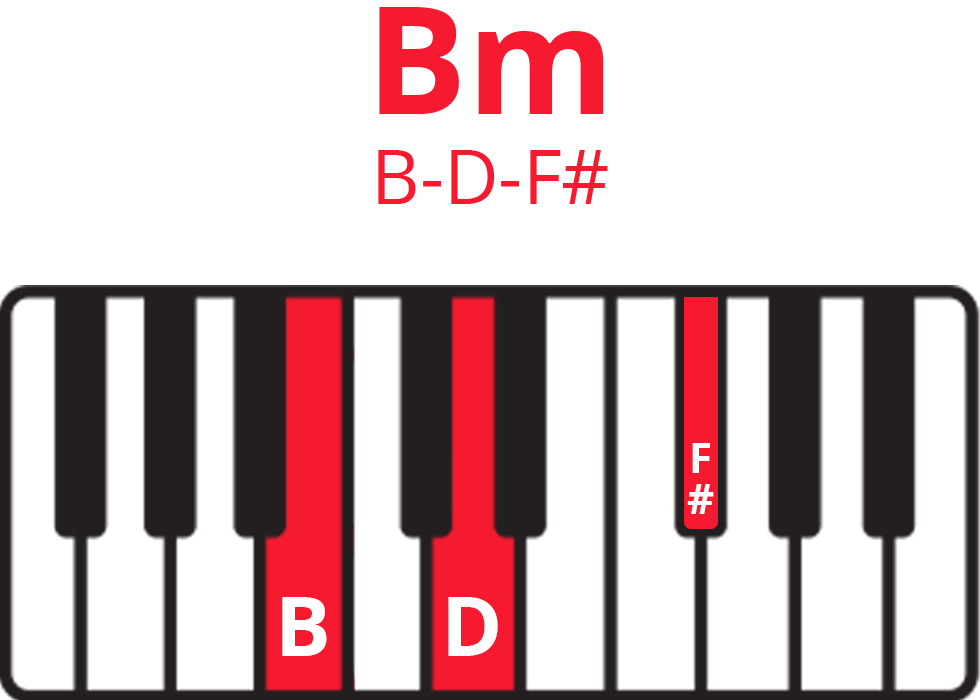
If you’re new to chording, practice a few times in root position first.
“Sus” is short for “suspended.” A sus chord is when you substitute the middle note of a triad (the third) for something else. In a sus2 chord, we substitute the third with the second note from the root.
For example, for Asus2, we substitute the third (C#) with the second note up from A (B).

Sus chords alter the sound of a chord juuuust enough to keep listeners hooked without changing the overall sound of the progression too much. They also sound super dreamy and beautiful.
To hear the impact of your sus chord, try playing just Asus2 with the rest of the progression in root position: G > Asus2 > D > Bm.
You can also try resolving sus chords to their non-sus cousins right after playing them, such as: Gsus2 > G > Asus2 > A > Dsus2 > D > Bmsus2 > Bm.
🔥🎹 HOT TIP! Remember to sharp your C on the Bsus2 chord! (Because we’re in D Major 🙂).
A slash chord is when you play the chord to the left of the slash with your right hand, and the note to the right of the slash as your bass note in your left hand. You can visualize the slash as meaning “over.”
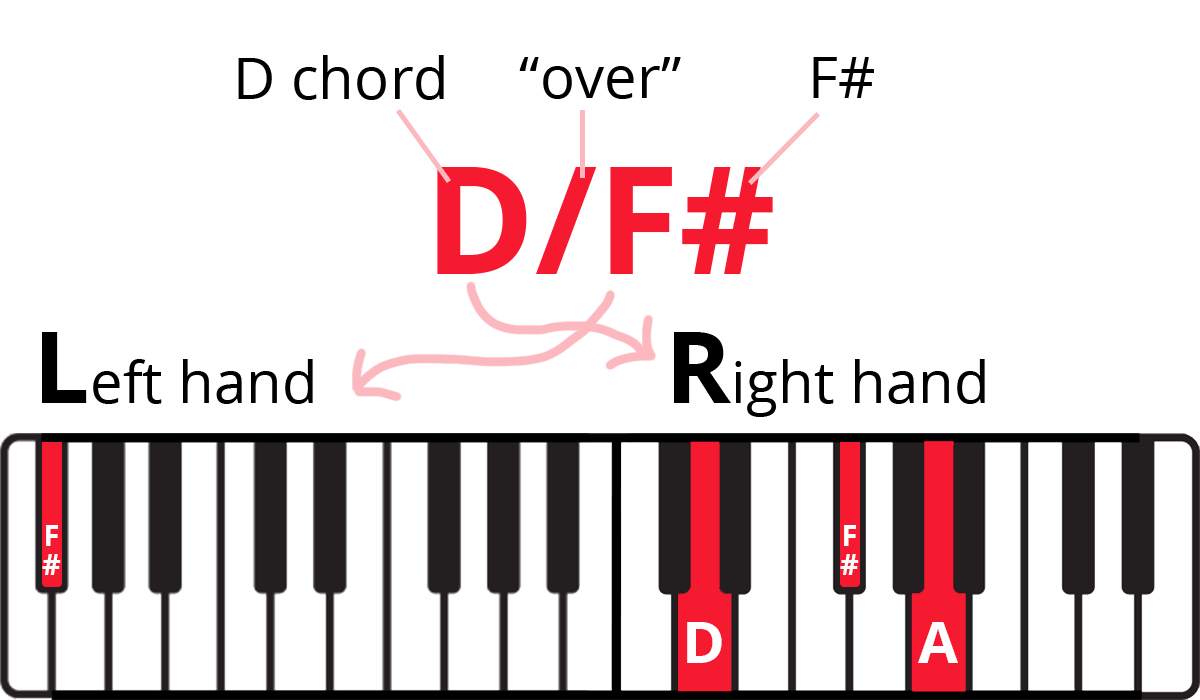
Slash chords are a subtle alteration to an otherwise simple chord, perfect for adding a splash of color.
Feel free to experiment: you might find that you like the slash chord’s effect on some chords and not others.
We also suggest using variations sparingly. Too many variations can make an overwhelming impact on the sound of the progression.
Inversions are another way to trick your ear into thinking something new is being played, without affecting the harmony of a progression.
Inversions change the top note of a chord. Since our ears gravitate towards the top notes of chords, hearing an inversion draws us to that top note and creates an illusion that a different chord is being played.
Here’s the 1st inversion of Bm:
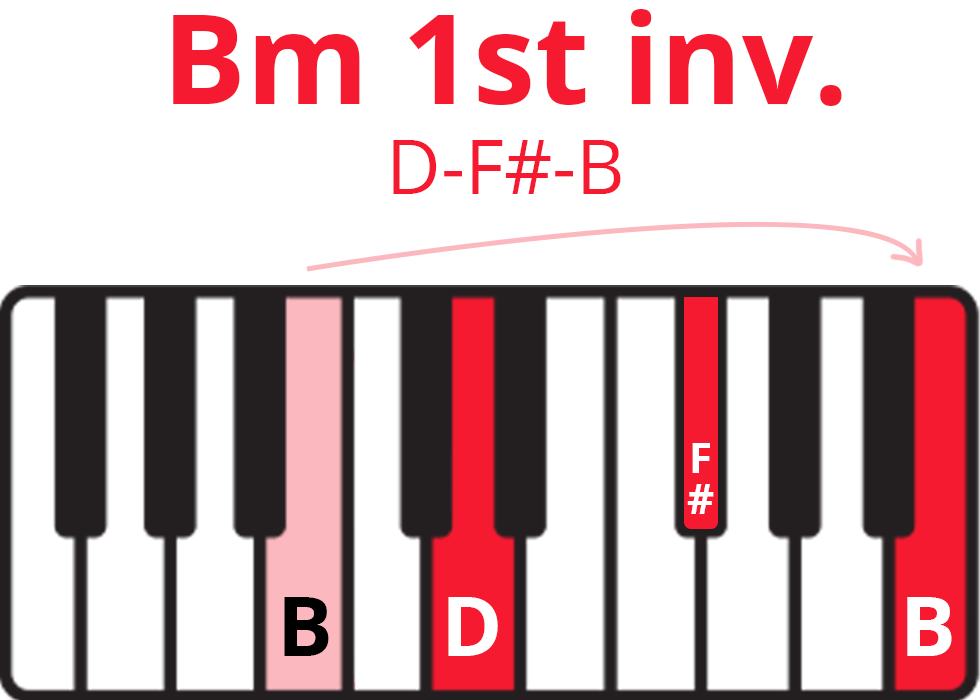
You can also try a 2nd inversion for the D Major chord. You’ll find that transitioning between D 2nd inversion and Bm root position is super easy—just move your thumb!
If you want to learn more about inversions and download complete keyboard diagrams for inversions in every chord, take a look at our guide here.
Now that you know some tricks, put everything together and mix it up! Try playing the progression like this:
G Root > Asus2 > D/F# > Bm 1st Inv.
Then try it like this:
G 2nd Inv. > A/C# > Dsus2 > Bm Root
Hear how different these two variations sound. See what you like or don’t like.
The reason why I can transition between chords smoothly is because I’ve spent a lot of time practicing things like inversions. Being able to move between chords will take time, and that’s normal.
Besides, keeping so many different variations of chords in your head can be overwhelming. So, if you’re just starting out, get your feet wet first by adding a single variation at a time. Again: it’s wise to add variations sparingly!
Have fun experimenting, and happy practicing!
Lisa Witt has been teaching piano for more than 20 years and in that time has helped hundreds of students learn to play the songs they love. Lisa received classical piano training through the Royal Conservatory of Music, but she has since embraced popular music and playing by ear in order to accompany herself and others. Learn more about Lisa.
/marketing/pianote/promos/april/banner-bg-m.webp)
We use cookies for traffic data and advertising. Cookie Policy »
/marketing/pianote/promos/april/banner-title.webp)